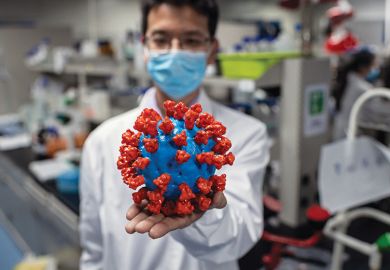If it wants to remain relevant, the Chinese Academy of Sciences (CAS) should concentrate its resources on managing large-scale research infrastructures, authors of a recent study in the journal Science have advised.
Since its founding in 1949, the CAS has become one of the largest scientific institutions globally, financing key strategic weapons programmes in the mid-20th century. But over the past decade, it has come under pressure from Beijing to justify its hefty expenditures.
Today, as Chinese universities continue to increase their output of high-quality research, the academy is doing some soul-searching about how it can remain relevant.
Concentrating its resources on “big-science” centres could allow the CAS to “enhance its uniqueness and strategic importance”, helping it to stand out among China’s many research institutions, said authors led by Xiyi Yang, a researcher at ShanghaiTech University.
“By orienting resources toward big-science-related institutes, the CAS may be able to gradually downsize other categories of institutes and reduce its redundant or ineffective functions,” they write.
Over the years, the CAS has gone through numerous restructures, pivoting from funding projects with commercial applications in the 1980s to establishing research institutes in emerging disciplines and working with local governments in the late 1990s. By the 2000s, the CAS was funding overlapping research areas at various institutes, with projects “unnecessarily” repeating each other, the authors note.
In 2021, the academy spent about £10.8 billion on science and technology, with nearly 44 per cent of funding provided by the Chinese government. Employing 69,000 researchers and 79,000 postgraduates, the CAS includes more than 100 institutes around China.
Some of these centres could be cut back, with the CAS putting more resources into national laboratories, the authors suggest.
“Rather than diverting and potentially wasting China’s increasing but still scarce resources to emergent but untested organisations, turning part of the CAS into national laboratories may be most cost effective and feasible,” they say.
The change in direction would also help the academy avoid “disorderly competition with universities and industrial research institutes”, they write.
Still, the authors warn that the process of turning the CAS into national laboratories will be “complicated and even radical and painful, given its storied history”.
They also caution against an abrupt pivot, writing that while the academy’s leadership “may start considering shifting resources…we do not mean to suggest an immediate separation of other categories of institutes from the academy”.
Register to continue
Why register?
- Registration is free and only takes a moment
- Once registered, you can read 3 articles a month
- Sign up for our newsletter
Subscribe
Or subscribe for unlimited access to:
- Unlimited access to news, views, insights & reviews
- Digital editions
- Digital access to THE’s university and college rankings analysis
Already registered or a current subscriber?








